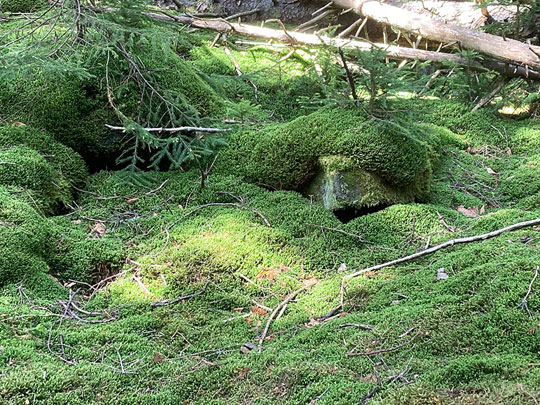On June 28, the Monday Morning Hikers traveled to West Virginia to do three short hikes in the Marlinton area.
Red Spruce Knob
This easy 2.5 mile (round-trip) hike was through a spruce "fairy forest" to a small overlook.
 |
| The moss was several inches thick - soft and damp. |
 |
| Spruce forest. |
 |
| Someday I'll learn how to take a photo of the spruce "fairy forest" that fully captures the lush greens. (Today was not that day!) |
 |
| A small opening at the top of the knob is maintained as an overlook. |
 |
| Remnants of the long-gone fire tower on the knob. |
Honeycomb Rocks
Not too far from Red Spruce Knob is a very short (1/2 mile) trail that showcases a set of unusual rocks that have tumbled from higher up the mountain.
 |
| Fractures in the sandstone were filled with iron-rich hematite. The sandstone then eroded away, leaving this box-like structure. |
Cranberry Glades
The Cranberry Glades boardwalk (1/2 mile loop) is always worth a visit. Each season brings new botanical sights. Over the years the boardwalk has deteriorated, and this year major sections have been replaced.
 |
| The boardwalk passes through a beaver pond. |



































